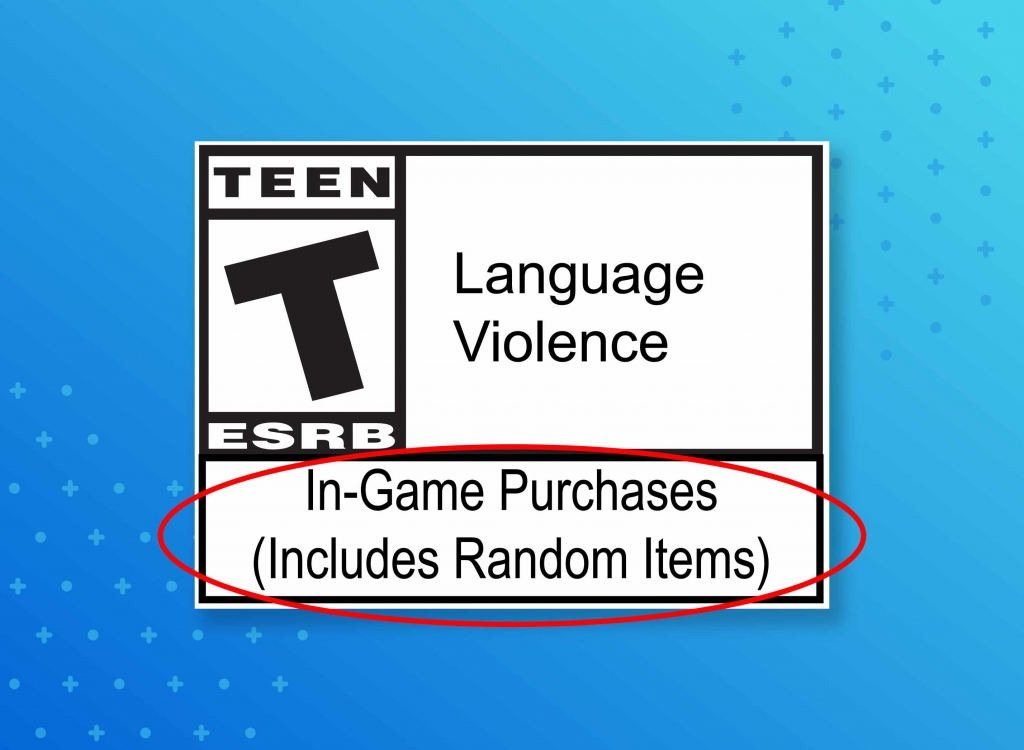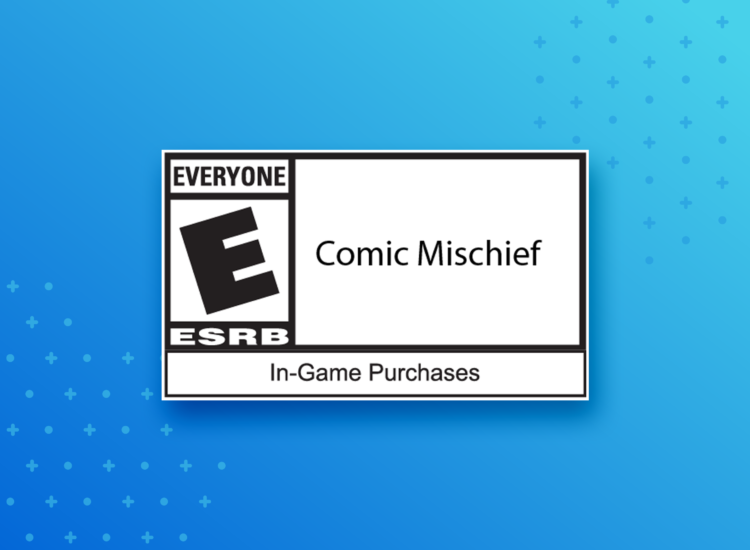Introducing a New Interactive Element: In-Game Purchases (Includes Random Items)

In April 2018 the ESRB began assigning Interactive Elements to physical video games with the In-Game Purchases and Users Interact notices. The In-Game Purchases Interactive Element informs parents and other consumers of when a game offers the ability to purchase additional items without leaving the game. To provide even greater transparency about the nature of in-game items available for purchase the ESRB will now begin assigning a new Interactive Element: In-Game Purchases (Includes Random Items).
What Does This New Notice Mean?
This new Interactive Element, In-Game Purchases (Includes Random Items), will be assigned to any game that contains in-game offers to purchase digital goods or premiums with real world currency (or with virtual coins or other forms of in-game currency that can be purchased with real world currency) for which the player doesn’t know prior to purchase the specific digital goods or premiums they will be receiving (e.g., loot boxes, item packs, mystery awards).
In-Game Purchases (Includes Random Items) will be assigned to all games that include purchases with any randomized elements, including loot boxes, gacha games, item or card packs, prize wheels, treasure chests, and more. Games that have the In-Game Purchases (Includes Random Items) notice may also include other non-randomized paid elements.
Consumers can make more informed decisions when purchasing or downloading a game, instead of finding out after the fact.
The original In-Game Purchases notice will still be assigned to games that offer any other type of purchase, including additional levels, cosmetic items, DLC, expansions, etc. However, going forward it will not be assigned to games with “loot boxes” or similar mechanics to ensure consumers clearly understand when the game offers purchases with randomized elements.
Why Now?
According to research, parents are far more concerned about their child’s ability to spend real money in games than the fact that those in-game purchases may be randomized. This data helped to inform the introduction of the In-Game Purchases Interactive Element. That being said, since adding the In-Game Purchases notice to ratings assigned to physical games many game consumers and enthusiasts (not necessarily parents) have reached out to us asking the ESRB to include additional information to identify games that include randomized purchases. The In-Game Purchases (Includes Random Items) Interactive Element was developed in response to those requests. By including more specificity about the randomized nature of the in-game purchases, consumers can make more informed decisions when purchasing or downloading a game, instead of finding out after the fact.
We want to ensure that the new label covers all transactions with randomized elements.
Why Not Say “Loot Boxes”?
“Loot box” is a term that doesn’t encompass all types of randomized in-game purchase mechanics. We want to ensure that the new label covers all transactions with randomized elements. In-Game Purchases (Includes Random Items) accounts for loot boxes and all similar mechanics that offer random items in exchange for real-world currency or in-game currency that can be purchased with real money.
Moreover, we want to avoid confusing consumers who may not be familiar with what a loot box is. Recent research shows that less than a third of parents have both heard of a loot box and know what it is. “Loot box” is a widely understood phrase in and around the video game industry and among dedicated gamers, but most people less familiar with games do not understand it. While this new label is primarily in response to feedback from game enthusiasts, it is still essential that all consumers, especially parents, have a clear understanding of the rating information we provide.
Of course, we will continue to educate parents on all forms of in-game purchases, parental controls, and ESRB-assigned age and content ratings.
Looking to the Future
As always, we will continue to monitor how video games evolve and innovate to ensure that we provide parents and other consumers with the information they need to make informed decisions about which games and apps are appropriate for their family. Additionally, ESRB will continue to update ParentalTools.org so parents have access to parental control guides for all major video game devices.

